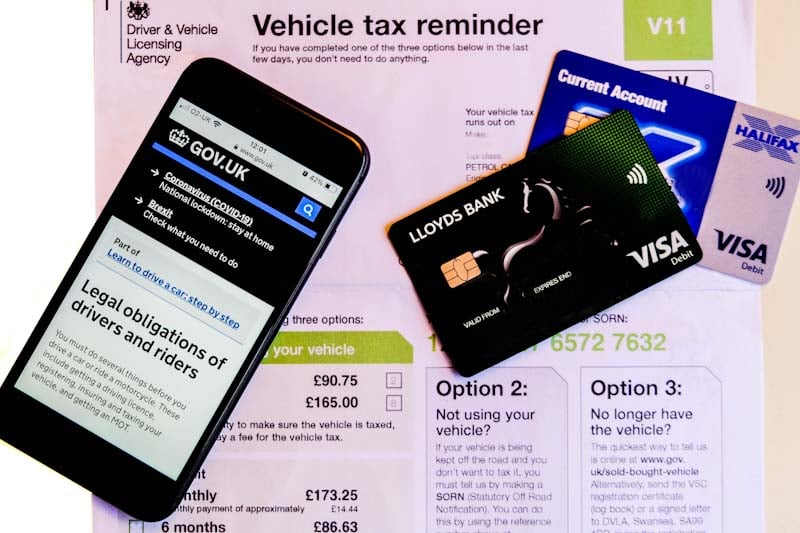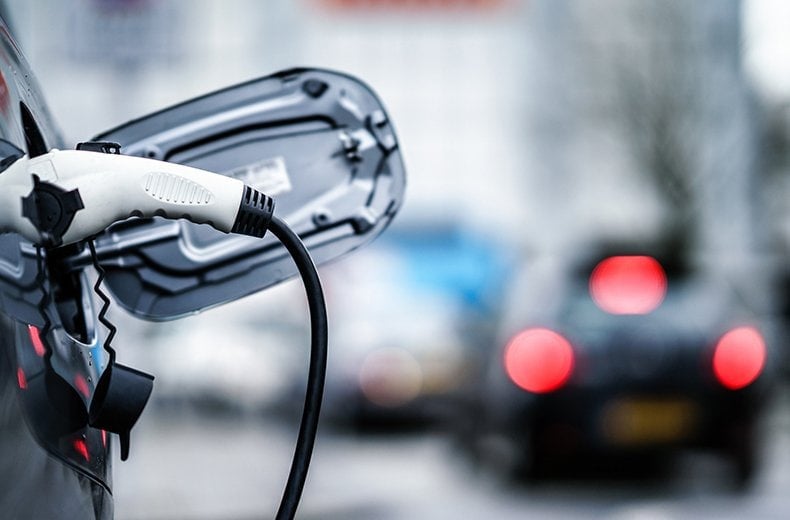While this responsibility is often seen as just another part of vehicle ownership, understanding how to properly tax your vehicle is crucial to ensuring compliance with the law and avoiding penalties.
In this know how guide, we walk you through the necessary steps, and the different ways to tax your vehicle.
How much road tax do I have to pay?
Road tax (or Vehicle Excise Duty, to use its official name) for most drivers is £195 a year. However, if your car has a list price that exceeds £40,000, you may be liable for the Expensive Car Supplement, which adds £425 per year to your annual VED (£620 in total).
Since April 2025, electric car drivers have been required to pay for car tax. However, if your car was registered before 2017 then your VED may be as little as £20 per year. For more information, read our feature on car tax bands - a complete guide to VED.

How to pay for road tax online
When paying for your vehicle tax online, you can use a debit or credit card or set up a Direct Debit to spread the cost.
In order to tax your car, van or motorcycle online you will need the following documents:
- Vehicle tax reminder or a ‘last chance’ warning letter from the DVLA
- Logbook (V5C), which must be in your name
If you have just bought the vehicle then you’ll need the green ‘new keeper’ slip from the logbook. The car tax cannot be transferred to the new keeper.
If you don’t have any of these documents, you will need to apply for a new logbook on the gov.uk website.
You can complete this process and tax your vehicle at the same time. The new V5C form will then arrive in the post within a week.
Finally, before you can legally drive your vehicle, you must meet all the necessary legal obligations for drivers, which include having valid tax, insurance, and MOT, as applicable.
What documents do you need to pay for road tax online?
To pay for road tax online in the UK, you will need a few important documents and details:
- The V5C registration certificate (also known as the logbook).
- A valid MOT certificate (if your car is over 3 years old).
- Proof of insurance (must be valid for the duration of the tax period).
- A valid payment method (credit/debit card or direct debit).
Remember that if you are paying with Direct Debit, it will cost you more to tax the vehicle.
Step-by-step guide to pay car tax online
Here is how you can pay your car tax (VED) online:
- Visit the official DVLA vehicle tax website
- Enter your vehicle's registration number and the 11-digit reference number from your V5C registration certificate (logbook).
- Check your eligibility: The DVLA will confirm whether your vehicle is eligible for online tax payment. If you are eligible, it will show details like the tax amount and due date.
- Choose a payment option: You can pay using a credit or debit card, or set up a Direct Debit for annual, six-monthly, or monthly payments.
- Receive official confirmation: After making the payment, you’ll receive an instant confirmation email.
Following this process, your car will be taxed.
Online road tax payment options
You can set up a Direct Debit to pay for your road tax online on the DVLA's website. Emails and letters about Direct Debit payments will be sent to the account holder.
- Payment frequency and costs: You can pay yearly, every six months, or monthly. There is a 5% surcharge for monthly or six-monthly payments, but no surcharge for annual payments.
- Information you will need: You will need your address, date of birth, and bank account details (bank name, account number, and sort code).
- Confirmation: You will receive a confirmation once your Direct Debit is set up. The first payment will be taken within 10 days of the tax start date, with subsequent payments taken on the first working day of the month.
How to cancel online road tax payment
DVLA will cancel your Direct Debit for your car tax if your vehicle has been sold or transferred to someone else, taken off the road (Statutory Off Road Notification, or SORN), written off by your insurance provider, or if the vehicle has been scrapped or reported as stolen.
It will also be cancelled if it has been exported out of the UK.
However, if you cancel your Direct Debit with your bank for another reason, you'll need to tax your vehicle again using a new Direct Debit from an account with sufficient funds, or pay the full amount with a valid debit or credit card.
The Direct Debit will also be cancelled if you no longer need to pay vehicle tax because the vehicle is used by a disabled person or is classed as 'historic' (over 40 years old).
Why can’t I pay my car tax online?
You may not be able to pay your car tax online if your vehicle’s details aren't up to date with the DVLA, if your MOT or insurance isn’t valid, or if the vehicle is exempt from road tax. Additionally, if the vehicle is declared off-road (SORN), you cannot pay online.

Cheaper than AA Price Promise^
• Roadside cover from £5.29 a month*
• We get to most breakdowns in 60 mins or less
• Our patrols fix 4/5 breakdowns on the spot

Paying car tax by phone
To apply for vehicle tax by phone, you can use the DVLA vehicle tax service by calling 0300 123 4321.
This service is available 24 hours a day, providing convenience for those who prefer to handle their vehicle tax over the phone.
However, it's important to note that Direct Debit payments cannot be made through this phone service.
For more information on call charges, it's recommended to check the relevant details beforehand – and visit gov.uk.
You’ll need your V5C or V5C/2 to hand, when speaking over the phone to the DVLA.
Paying for car tax at the Post Office
To tax your vehicle at a Post Office, you need to visit a branch that handles vehicle tax services.
When you go, make sure to bring the payment for your vehicle tax, or your bank or building society account details if you wish to set up a Direct Debit.
If your vehicle is exempt from tax, you will not need to provide payment details. But the vehicle will still need to be taxed, even if you are not required to pay.
What documents will I need to tax my car at the Post Office?
In addition to payment, you will need to bring one of the following documents: your vehicle logbook (V5C), which must be in your name, or the green ‘new keeper’ slip from the log book if you have recently purchased the vehicle.
You may also need to provide evidence of a valid MOT, which must be in place when the tax starts.
This could include a screenshot of your vehicle’s MOT history or an MOT certificate, if available.
Keep in mind that it can take up to two days for MOT information to be updated, so if your vehicle has just passed its MOT, you may not be able to tax it immediately after the test.
Which Post Offices will tax my car?
You'll need to check the Branch Finder tool to see if you can tax your vehicle at your local Post Office.

Do you need to pay road tax for electric vehicles?
For most electric vehicle owners, the annual road tax is £195.
However, for new electric cars registered after April 1st 2025, with a list price over £40,000, an additional charge called the Expensive Car Supplement will apply for the first five years of the standard road tax rate.
Currently set at £425 per year, the Expensive Car Supplement means that owners of 'expensive' electric cars will pay a total of £620 annually for road tax.
As of April 1st 2025, EV drivers will no longer be exempt from Vehicle Excise Duty (VED), as free road tax will be eliminated.
EV road tax will now impact all owners of electric vehicles.
Get a service or repair at home
RAC Mobile Mechanics can come to you, saving you the hassle of going to a garage.












